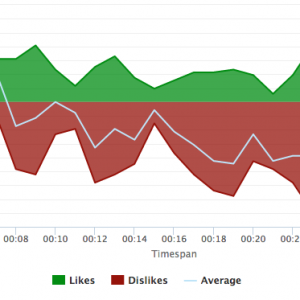Harnessing AI and Business Intelligence to Unlock New Insights and Opportunities

Artificial intelligence (AI) and business intelligence (BI) technologies are transforming the way organizations generate insights and make decisions. By leveraging AI and BI, companies can optimize their operations, streamline their processes, and gain a competitive edge in their respective markets. However, implementing AI and BI can be challenging, especially for businesses that lack the necessary data infrastructure and skilled workforce. In this article, we will explore the power of AI and BI, their key differences, implementation strategies, real-world examples of success, and the challenges that must be overcome to leverage these technologies fully.
Understanding the Power of AI and Business Intelligence
In today’s fast-paced business world, companies need to make quick and informed decisions to stay ahead of the competition. This is where the power of AI and business intelligence (BI) comes into play. By leveraging these technologies, businesses can gain valuable insights from their data and automate tasks to improve efficiency.
Defining AI and Business Intelligence
AI refers to the ability of machines to perform tasks that typically require human intelligence, such as perception, reasoning, learning, and problem-solving. In contrast, BI is the process of collecting, analyzing, and visualizing data to generate insights that inform business decisions. AI and BI are complementary technologies that can be combined to enable more advanced analytics and decision-making.
AI has the potential to revolutionize the way businesses operate by automating manual tasks and processes. For example, AI-powered chatbots can handle customer inquiries and support, freeing up human employees to focus on more complex tasks. BI, on the other hand, can help businesses identify patterns and trends in their data, allowing them to make data-driven decisions.
Key Differences Between AI and Business Intelligence
While both AI and BI involve the use of data to drive business outcomes, there are key differences between the two technologies. AI is focused on automating tasks and processes, while BI is focused on generating insights and trends from data. AI involves machine learning and predictive analytics, while BI involves descriptive and diagnostic analytics. AI can be used to automate manual tasks such as data entry, while BI can be used to identify areas for optimization and improvement.
Ultimately, AI and BI are complementary technologies that work together to enable businesses to make data-driven decisions and improve their operations.
The Evolution of AI and Business Intelligence Technologies
The development of AI and BI technologies has been driven by rapid advancements in computing power, cloud computing, and big data. The ability to process large amounts of data quickly and accurately has enabled the development of more sophisticated AI algorithms and BI tools. The growth of AI and BI has also enabled the collection of vast amounts of data from connected devices, which can be analyzed to generate insights.
As AI and BI technologies continue to evolve, businesses will have even more powerful tools at their disposal to improve their operations and gain a competitive advantage in their industries.
Implementing AI and Business Intelligence in Your Organization
Identifying the Right Use Cases
The first step in implementing AI and BI is to identify the appropriate use cases. Organizations should focus on areas where data can be used to drive business outcomes such as revenue growth, cost reduction, or operational optimization. Some common use cases include fraud detection, predictive maintenance, supply chain optimization, and customer segmentation.
For instance, in the case of supply chain optimization, AI and BI can be used to analyze data from various sources such as inventory levels, production schedules, and shipping data. This can help organizations identify inefficiencies and bottlenecks in the supply chain, and optimize processes to reduce costs and improve delivery times.
Similarly, in the case of customer segmentation, AI and BI can be used to analyze customer data such as purchase history, demographics, and behavior patterns. This can help organizations identify different customer segments and tailor their marketing and sales strategies accordingly, leading to increased revenue and customer satisfaction.
Building a Strong Data Foundation
Once the use cases have been identified, the next step is to build a strong data foundation. This involves ensuring that data is accurate, complete, and relevant. Data must be collected and stored in a way that enables easy retrieval and analysis. Organizations should also invest in data quality tools and processes to ensure that the data is clean and consistent.
For example, organizations can use data profiling tools to identify data quality issues such as missing values, duplicates, and inconsistencies. They can also implement data governance policies and procedures to ensure that data is managed effectively and securely.
Choosing the Right Tools and Platforms
There are many AI and BI tools and platforms available in the market. Organizations must choose the right ones based on their specific needs, budget, and resources. Some factors to consider include ease of use, scalability, data security, and compatibility with existing systems.
Developing a Skilled Workforce
Finally, organizations must invest in developing a skilled workforce that can leverage AI and BI technologies effectively. This involves training existing employees on the new tools and technologies and hiring new talent with the necessary skills and expertise.
For example, organizations can provide training programs and workshops to help employees learn new skills such as data analysis, machine learning, and data visualization. They can also hire data scientists, data analysts, and business analysts who have the necessary skills and expertise to work with AI and BI technologies.
Overall, implementing AI and BI can help organizations gain valuable insights from data, make better decisions, and drive business growth. Artificial Intelligence (AI) and Business Intelligence (BI) are powerful tools that can transform the way businesses operate. From improving customer experience to optimizing financial decisions, the applications of AI and BI are vast and varied.
Overcoming Challenges in AI and Business Intelligence Adoption
Addressing Data Privacy and Security Concerns
Organizations must ensure that data privacy and security are a top priority when implementing AI and BI technologies. This involves implementing robust security measures such as encryption, access controls, and intrusion detection systems.
Ensuring Data Quality and Accuracy
AI and BI results are only as good as the quality and accuracy of the underlying data. Organizations must implement effective data quality processes and invest in data quality tools to ensure that the data is clean and consistent.
Managing Change and Resistance within the Organization
AI and BI adoption can be challenging, especially in organizations that are resistant to change. Organizations must develop change management processes and communication strategies to ensure that employees understand the benefits of the new technologies and are willing to adopt them.
Evaluating the Return on Investment
Finally, organizations must evaluate the ROI of their AI and BI investments to ensure that they are getting the desired outcomes. This involves tracking the performance of the technologies, analyzing the costs and benefits, and making adjustments as necessary.
Conclusion
AI and BI technologies have the potential to unlock new insights and opportunities for organizations. However, implementing these technologies requires a strategic approach and a willingness to invest in the necessary data infrastructure, tools, and talent. By following best practices, organizations can harness the power of AI and BI to drive business outcomes and remain competitive in their respective markets.







